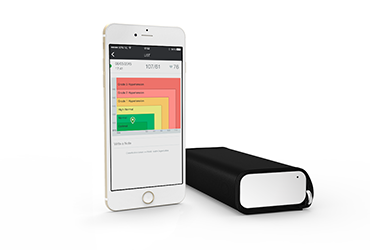High blood pressure, also known as hypertension, can be fairly dangerous as it doesn’t cause any symptoms but can lead to a number of serious health conditions such as heart attacks, heart failures, kidney disease, sexual disfunction and more.
So how is prehypertension related to high blood pressure?
In this article we cover everything you need to know about prehypertension, how to know if you have it, the causes and things you can do to reduce risk.
What is prehypertension?
Prehypertension is when blood pressure values are above normal or optimal levels which should fall less than 120/80 mmHg, but haven’t reached the status of high blood pressure just yet. You can look at prehypertension as a warning sign that lifestyle changes must take place and you need to keep an attentive eye on your blood pressure.
What blood pressure reading indicates prehypertension?
The World Health Organization classifies prehypertension as a blood pressure reading that measures between 120/80 and 139/89.
What are the risks of prehypertension?
As mentioned, those with prehypertension are likely to develop high blood pressure unless they take steps to lower their blood pressure, such as quitting smoking, consuming lower amounts of salt, and maintaining a healthier diet. If you know you have prehypertension, talk to your doctor about ways to lower your blood pressure.
Learn more about high blood pressure in our article: ‘‘What is high blood pressure and what does it really mean?”
What causes prehypertension?
Experts don’t know with certainty what causes the blood pressure to rise from its optimal levels but they do believe it’s mostly attributed to lifestyle choices such as a lack of exercise and poor diet habits. It has been shown that too much salt and alcohol can increase blood pressure too.
Who Is at Risk for Prehypertension?
According to the CDC about 30% of all Americans are at risk of prehypertension.
It’s important to note that it’s not just adults who are at risk. Blood pressure levels have increased substantially for American children and teens which increases their risk of developing high blood pressure as they grow older.
What are the symptoms of prehypertension?
Prehypertension is usually without symptoms and hence hard to detect without regular blood pressure measurements>
Only extremely high blood pressure, in rare cases, manifests itself symptomatically through headaches, visual changes, fatigue, or dizziness.
As those are all very general symptoms that occur with too many other health conditions, regular blood pressure checks done with a clinically validated upper arm cuff such as QardioArm, are the way to detect prehypertension.
Can stress cause prehypertension?
Short term or occasional stress is not believed to be the cause of prehypertension, although stress-related spikes in the blood pressure levels can add up over time and put you at risk of developing prehypertension.
Prehypertensive is more likely to develop through poor diet, alcohol use, and lack of sleep.
If you worry about stress and its effect on your blood pressure, a good idea is to introduce meditation time to your daily routine.
Tip – Try and meditate just before taking a blood pressure reading as it’s advisable to relax for a few minutes before taking a reading. That way you can immediately measure the effect of your meditation skills, not just your blood pressure!
Is prehypertension dangerous?
Prehypertension is a warning sign of the risk of developing long term high blood pressure (hypertension), which increases the possibility of heart attack, stroke and other potentially fatal heart health problems later on. If detected and treated early, prehypertension can be reversed.
What should I do if I have prehypertension?
There are several lifestyle adjustments that can help address prehypertension. Those include reaching and maintaining a healthy weight, introducing regular exercise into daily routine and ensuring your diet is rich in vegetables, fruits, fish and low-fat dairy.
The DASH diet has been proven to lower blood pressure naturally by lowering salt intake and adding potassium, magnesium, calcium, protein and fiber to your meals. Limit your alcohol intake along with trans fats and cholesterol and drink plenty of water during the day.
What is the treatment for prehypertension?
There is no medical treatment for prehypertension as it’s mostly a warning sign that you are at risk of developing high blood pressure which can cause many health issues. However, the great news is that the risk of developing high blood pressure can be reduced by making lifestyle changes.
How can I lower prehypertension naturally?
As mentioned above, the best way to lower hypertension is naturally, simply by, making lifestyle changes such as:
- – Lose weight
- – Exercising regularly
- – Consuming a diet full of vegetables and fruits
- – Eating fish and other sources of protein
- – Lowering salt intake
- – Adding vitamins like potassium, magnesium and calcium
If you are worried about prehypertension or want a better way to monitor your progress towards healthier blood pressure levels, QardioArm wireless blood pressure monitor makes it super-easy.
Sources:
Health Central




